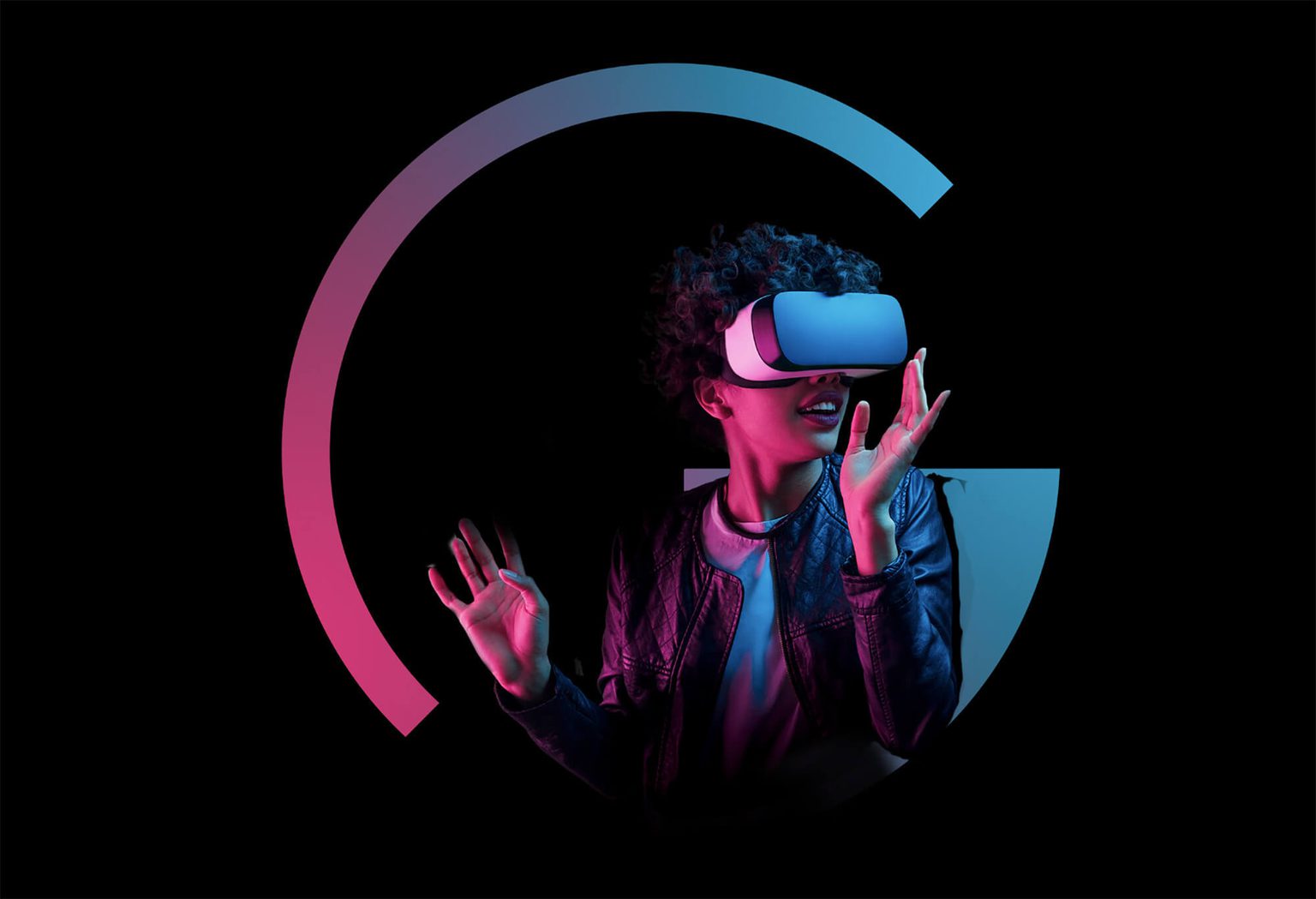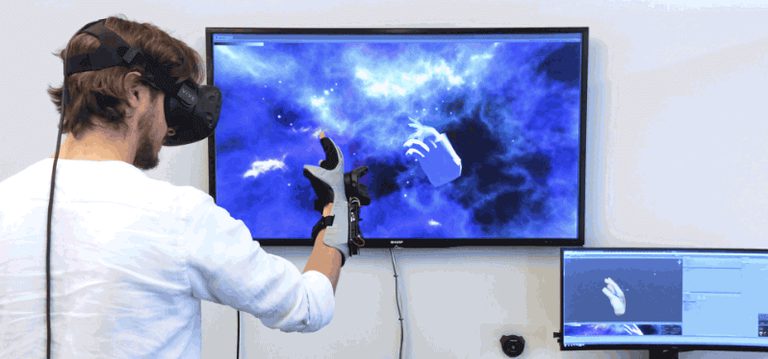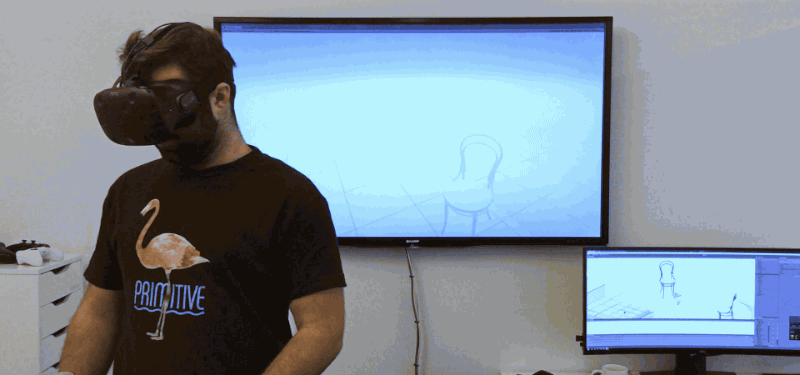
Technology

The Power Glove was Nintendo’s first foray into motion-controlled gaming. But the product produced by Mattel was ahead of its time; gaming systems of the early 90s were not able to render 3D graphics or even accommodate analog control inputs. In the current era of AR/VR development, the Power Glove’s true potential is showcased by other, modern VR glove products. However, none of these products have the same “retro-cool” factor, and with used Power Gloves available cheaply on eBay, they provide a readymade DIY solution for VR hand tracking. So we decided to bring this classic back to life by making it compatible with the HTC Vive VR system.
The Power Glove’s true potential can be unlocked by integrating it with modern VR hardware.
So what can you do with this? For starters, simple hand gesture recognition is pretty easy with the available data. We rigged up a hand model to respond to the sensor data of the Power Glove and it works pretty well. Inspired by the original branding of the Power Glove, we made a demo in which you can shoot lightning once you make a fist; because, you know, “everything else is child’s play.”

A recurring frustration we’ve had whenever we’ve prototyped in VR has been designing on-screen interface interactions. The Vive controller just isn’t a great tool for touch interactions. With the Power Glove and a second tracker mounted to the backside of an acrylic iPad, we were able to simulate more natural interactions with an iPad in VR, which we utilized to make an AR tablet application (Insert Inception soundtrack here). We tested this with the Vive controller and the Power Glove and the overall experience improves dramatically when using the glove. The acrylic iPad even provides the same haptic feedback as a tablet would.

Recently, we started creating a game that takes advantage of the Power Glove’s capabilities. In the game, rocks, papers, and scissors come flying at the player who has to shoot them with the correct countermeasure by forming their hand into the right shape and aiming at the oncoming targets. The game is still in an early stage, but it’s already a lot of fun to play!

We have a couple of things we’d like to figure out in the future. The acrylic iPad mock-up can play some tricks on the tracking and we are hoping to get better results with polycarbonate. The Vive tracker currently allows for only 3 analog values to be sent, which introduces a little lag because it forces us to alternate the middle- and ring-finger values. We would love to change the Arduino Due for something smaller and cheaper; however, it is currently the only Arduino board that supports the library for communicating with the Vive tracker.
This project was a quick way for us to learn about the Vive tracker, hand-tracking, and explore some simple interaction paradigms for VR. It’s interesting to see the affordances that hand tracking brings to VR interactions and what still needs improvement. Holding virtual objects, touching mock-up screens, and pointing at things just feels a lot better when using the dexterity of one’s fingers instead of trying to use a fixed wand. At the same time, small discrepancies between the hand and its virtual model can cause irritation, especially when interacting with other physical devices, like in the tablet application. Overall, we are pretty happy with the early results and are looking forward to putting the glove to use in some future projects.
We took a Power Glove apart, 3D scanned the interfacing plastic parts and built modified parts that hold the Vive Tracker and an Arduino Due on the glove. After some prototyping on a breadboard, we designed a shield for the Due and etched it using the laser-cutter transfer technique. We then soldered all components and spray-painted the whole shield to protect the bare copper. After mounting the tracker and tweaking the code by matzmann666, we had the glove work. If you are more curious or want to reproduce this, we uploaded all of our files on GitHub.